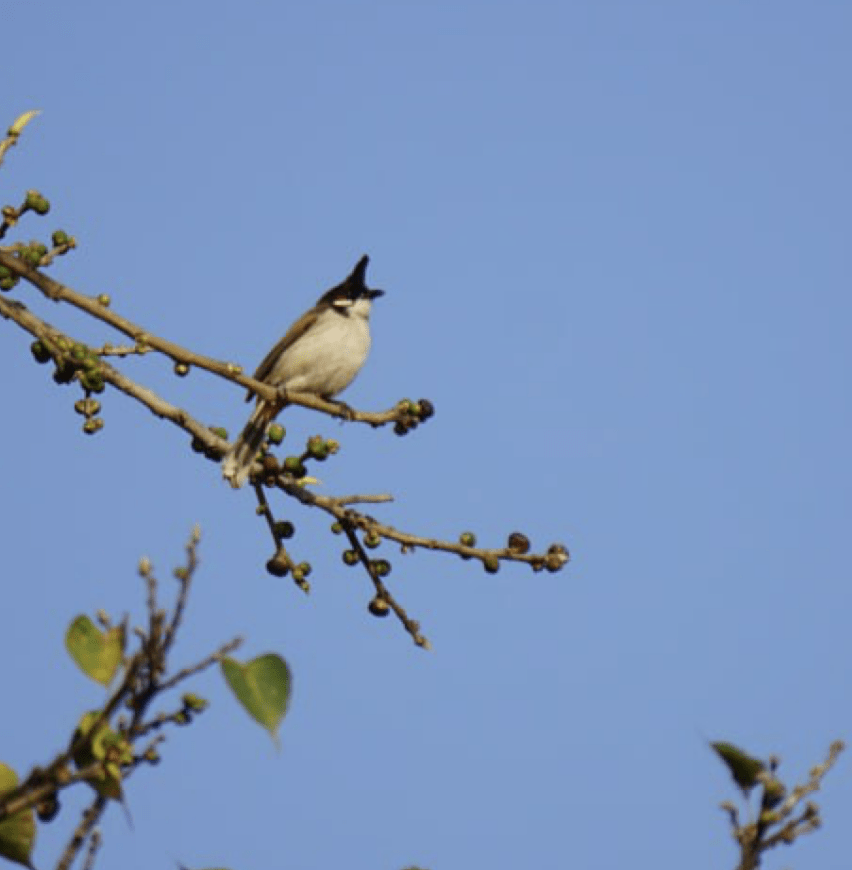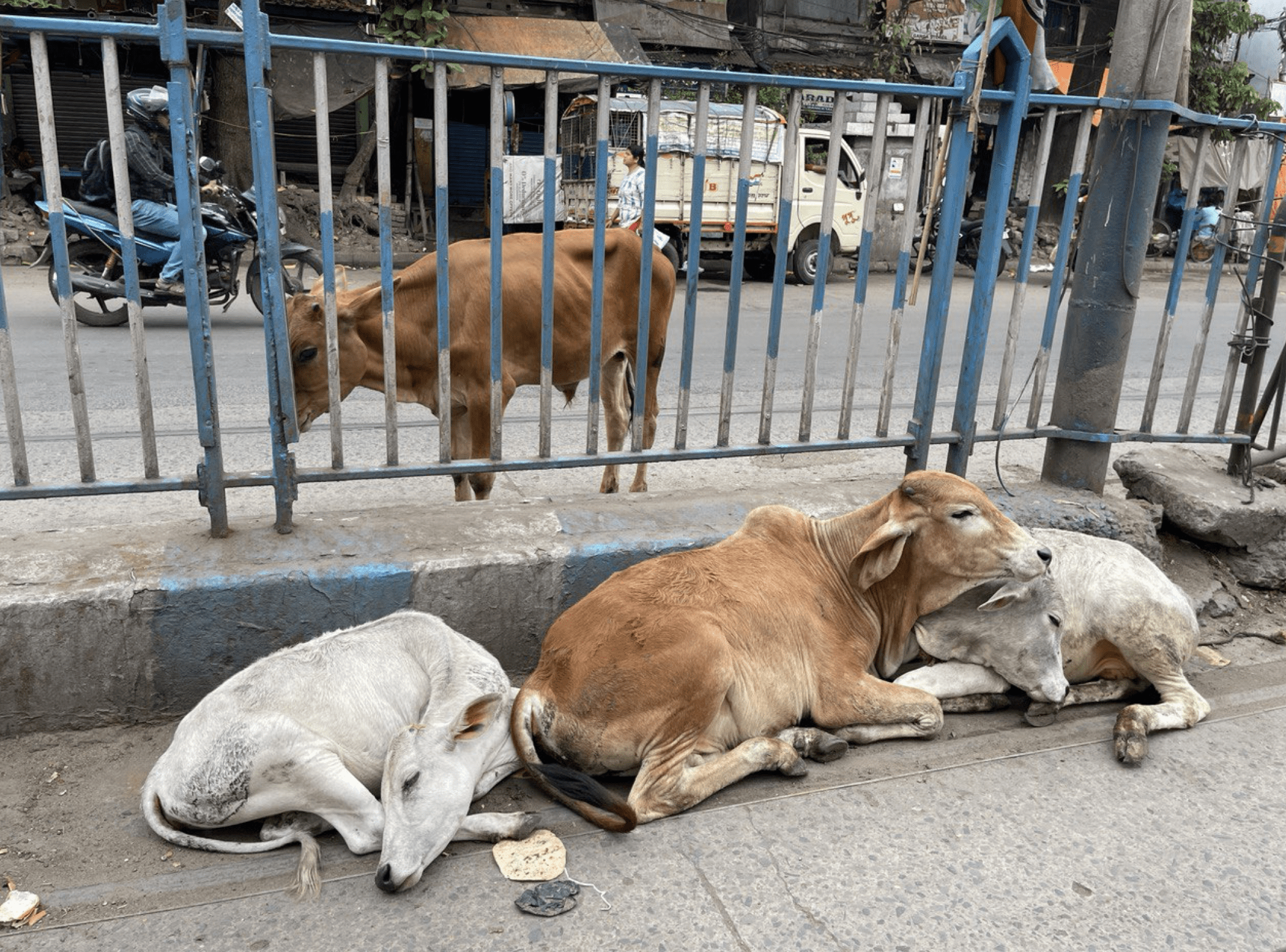Back to main page Developed by Rajni Bhargava
♦ Unit I ♦ Unit II ♦ Unit III ♦ Unit IV ♦ Unit VI ♦ Final Performance Task ♦
Proficiency Level: Novice High/Intermediate Low
Time: 2X75 minutes
Cultural Significance
Objectives: At the end of the unit students will be able to:
- describe the cultural relevance of some animals among Indian communities
- explain their specific characteristics in reference to the region or relations with a local community
- demonstrate understanding of various symbolic meanings related to animals
Episode 1: Teacher reviews
- https://hindilanguage.info/hindi-grammar/verbs/voice/passive-voice/
- https://open.lib.umn.edu/hindiurdu/chapter/grammar-notes-9-1-passive-voice/
- https://openbooks.lib.msu.edu/basichindi/chapter/chapter-8_grammar-degrees-of-adjective/
गाय के बारे में जानें
In their group, students browse through the list of useful vocabulary below and create 3 categories to organize them accordingly. They create a table — they write the name of the category in each column and list the words in the appropriate column:
शब्दावली:
- उपयोगी — फ़ायदेमंद (useful/beneficial)
- दुधारू — दूध देने वाली
- मक्खियाँ f. — छोटे कीड़े
- प्रजाति f. — नस्ल f.– जाति f.
- आहार m.– खाना
- औषधियां f. — जो पौधे दवा बनाने में काम आते हैं
- दर्जा m. — पद, वर्ग m. category
- X की मान्यता belief f. — X को समझना, X को मानना,
- धन m. — सम्पन्नता f. — अमीरी f. — समृद्धि f. — nouns (richness)
- धनी — सम्पन्न — अमीर — समृद्ध — adjectives (rich)
- सींग-सहित — सींग के साथ
- X की तुलना में – in comparison with
- महत्त्व/महत्त्वपूर्ण – important/importance
- घरेलू पशु m. – domesticated animal
- पौष्टिक – nutritious
- दूध m. – milk
- पनीर – cottage cheese
- दही m. – yogurt
- मक्खन m. – butter
- घी m. – clarified butter
- आहार – food, diet
- गोबर m. – cow dung
- खाद – fertilizer
- फसल – crop
- देवी f. – goddess
- देवता m. – god
- निवास m. – place to live
- श्रिंगार करना – make up
- के अवसर पर – on the occasion of
- प्राचीन – old
- समृद्धि का प्रतीक – symbol of wealth and prosperity
- युद्ध के दौरान – during the war
- स्वर्ण – gold
- आभूषण m. – jewellry
- अमीर /गरीब – rich/poor
- गम्भीर – serious
- पॉलिथिन – plastic
- फेंकना – throw
- बचाना – to save
- विचार करना – to think
- मृत्यु f. – death
- जन्म m. – birth
Episode 2: Students are required to read in their group the text below in blue (if there is time, they read the rest of the text):
गाय का यूं तो पूरी दुनिया में ही काफी महत्व है, चाहे वह दूध का मामला हो या फिर खेती के काम में आने वाले बैलों का। दुधारू पशु होने के कारण यह बहुत उपयोगी घरेलू पशु है।
गाय का शरीर: गाय का एक मुंह, दो आंखें, दो कान, चार थन, दो सींग, दो नथुने तथा चार पांव होते हैं। पांवों के खुर गाय के लिए जूतों का काम करते हैं। गाय की पूंछ लंबी होती है तथा उसके किनारे पर एक गुच्छा भी होता है, जिसे वह मक्खियां आदि उड़ाने के काम में लेती है। गाय की कुछ प्रजाति में सींग नहीं होते।
गाय के रंग: गाय कई रंगों जैसे सफेद, काला, लाल, बादामी तथा चितकबरी होती है।
गायों की प्रमुख नस्लें: गायों की यूं तो कई नस्लें होती हैं, लेकिन भारत में मुख्यत: सहिवाल (पंजाब, हरियाणा, दिल्ली, उत्तरप्रदेश, बिहार), गीर (दक्षिण काठियावाड़), थारपारकर (जोधपुर, जैसलमेर, कच्छ), करन फ्राइ (राजस्थान) आदि हैं। विदेशी नस्ल में जर्सी गाय सर्वाधिक लोकप्रिय है। यह गाय दूध भी अधिक देती है। भारतीय गाय छोटी होती है, जबकि विदेशी गाय का शरीर थोड़ा भारी होता है।
फ़ायदे: गाय का दूध बहुत ही पौष्टिक होता है। यह बीमारों और बच्चों के लिए बेहद उपयोगी आहार माना जाता है। इसके अलावा दूध से कई तरह के खाने बनते हैं। दूध से दही, पनीर, मक्खन और घी भी बनता है। गाय का घी और गोमूत्र अनेक आयुर्वेदिक औषधियां बनाने के काम भी आता है। गाय का गोबर फसलों के लिए सबसे अच्छी खाद है।
धर्म में गाय: भारत में गाय को देवी का दर्जा प्राप्त है। ऐसी मान्यता है कि गाय के शरीर में 33 करोड़ देवताओं का निवास है। यही कारण है कि दिवाली के दूसरे दिन गोवर्धन पूजा के अवसर पर गायों की विशेष पूजा की जाती है और उनका मोर पंखों आदि से श्रृंगार किया जाता है।
प्राचीन भारत में गाय समृद्धि का प्रतीक मानी जाती थी। युद्ध के दौरान स्वर्ण, आभूषणों के साथ गायों को भी लूट लिया जाता था। जिस राज्य में जितनी गायें होती थीं उसको उतना ही अमीर माना जाता है। कृष्ण के गाय प्रेम को भला कौन नहीं जानता। इसी कारण उनका एक नाम गोपाल भी है।
समस्या: शहरों में पॉलिथिन का उपयोग किया जाता है और उसे फेंक दिया जाता है। उसे खाकर गायों की मृत्यु हो जाती है।सभी को गंभीरता से विचार करना होगा कि गाय को कैसे बचाया जा सके।
(Based on https://hindi.webdunia.com/hindi-essay/cow-essay-118111500032_1.html )
Episode 3: In Their groups, students write the following language structures they see in the text:
| Groups # | Passives | Conjunct Verbs |
Episode 4: Write 5 interesting facts about the cow you learned from the text. Extra bonus — share two important facts which are not in the text.
Home Assignment: Complete task at home.
Episode 5. Documentary on Punganur Cow
The instructor reviews passive voice again.
In their group, students watch the assigned segments from the documentary and answer the following questions:
| Group # | ये गायें कहाँ पाई जाती हैं ? | इनकी क्या विशेषता है? | डॉक्टर किस पर काम कर रहे हैं? | इन गायों से क्या फ़ायदे हो सकते हैं? | लोग क्यों इनको ख़रीदना चाहेंगे? | क्या आप ऐसी गाय ख़रीदना चाहेंगे या नहीं और क्यों? |
https://www.youtube.com/watch?v=J09srsginDQ (0-055 min, 2:33-3:26)

